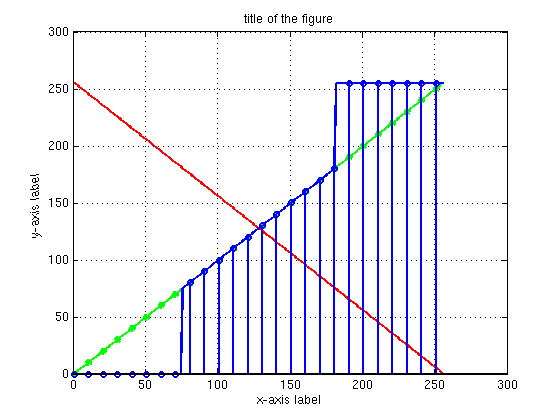few elements from Matlab programming
Course homepage: http://cmp.felk.cvut.cz/cmp/courses/ZSO
clear all; rehash; % create a vector from 0 to 255 a = [0:255]; % revert the elements b = a(end:-1:1); % memory allocation c = zeros(size(a)); th1 = 75; th2 = 180; % assign 0 to all c-elements which are smaller that the threshold c(a<th1) = 0; c(a>th2) = 255; % note that this is much faster than using a for-cycle for i=1:size(a,2), if a(i)<th1 c(i)=0; elseif a(i)>th2 c(i)=255; end end % without memory pre-allocation it would be even slower d = []; for i=1:size(a,2), if a(i)<th1 d = [d,0]; elseif a(i)>th2 d = [d,255]; else d = [d,a(i)]; end end % when assigning vectors both need to be of the same size c(a>=th1 & a<=th2) = a(a>=th1 & a<=th2); % open a figure and clear the possible content figure(1); clf; % plot the vector a and hold the content plot(a,'-g'), hold on where = 1:10:size(a,2); % plot only some elements plot(where,a(where),'*g') plot(b,'-r'), plot(c,'-b'), % better plotting of discrete data stem(where,c(where),'b') grid on title('title of the figure') xlabel('x-axis label') ylabel('y-axis label')
